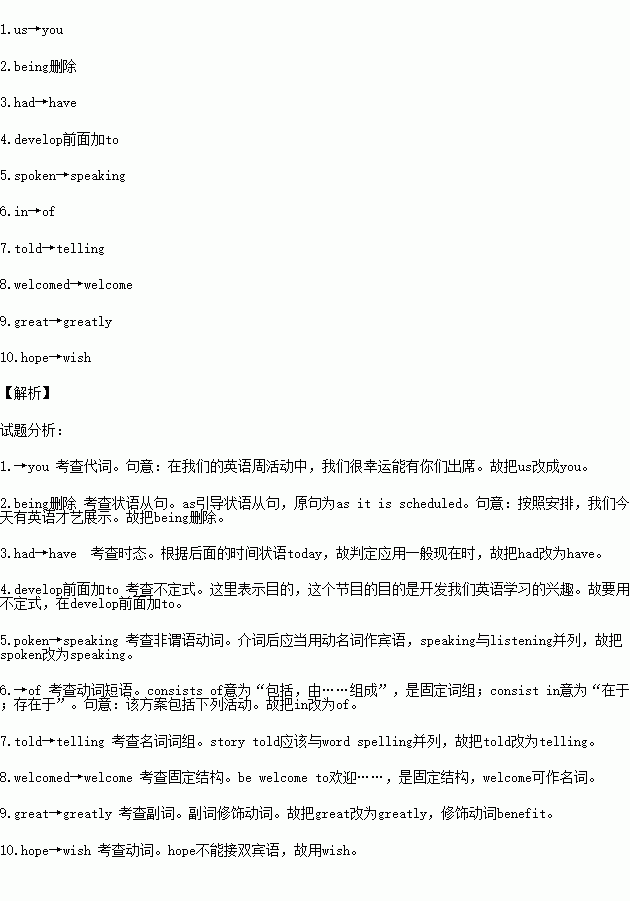题目内容
假定英语课上老师要求同桌之间交换修改作文,请你修改你同桌写的以下作文。文中共有10处语言错误,每句中最多有两处。每处错误仅涉及一个单词的增加、删除或修改。
增加:在缺词处加一个漏字符号(∧),并在其下面写出该加的词。
删除:把多余的词用斜线(\)划掉。
修改:在错的词下划—横线,并在该词下面写出修改后的词。
注意:1. 每处错误及其修改均仅限一词;
2. 只允许修改10处,多者(从第11处起)不计分。
Dear American guests,
On behalf of our school, I would like to express our warm welcome to you. We are lucky to have us here in the middle of our English Week activities.
As being scheduled, we had English Talent Show today. The purpose of this programme is develop our interest in English learning and practical abilities in listening and spoken. The programme consists in the following activities: recitation, singing, word spelling, story told and so on. The Show will begin at two o’clock this afternoon at the Student Center. Dear guests, you are welcomed to take part in our activities. I hope we students will benefit great from your presence.
I sincerely hope you a pleasant time with us. Thank you.

